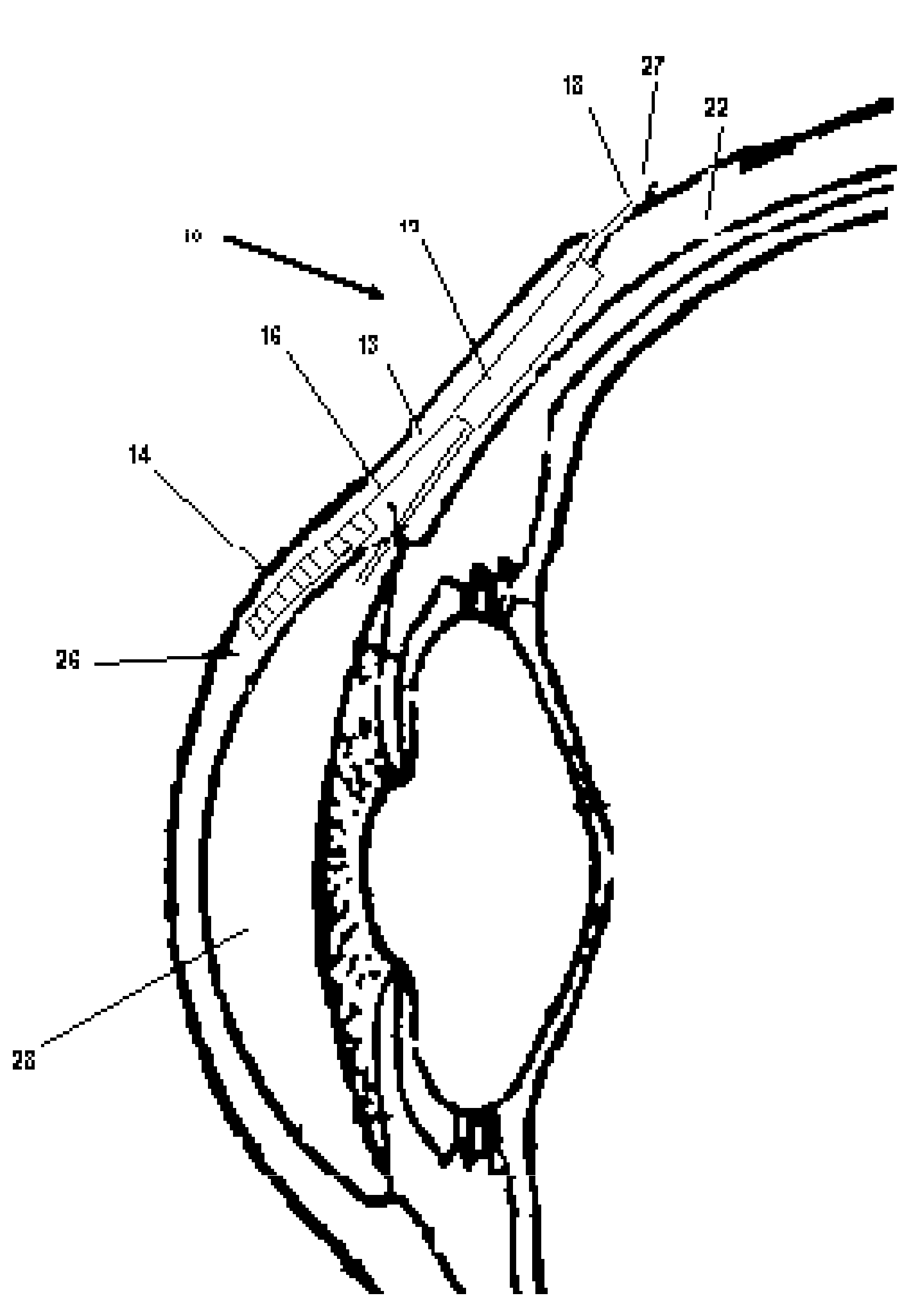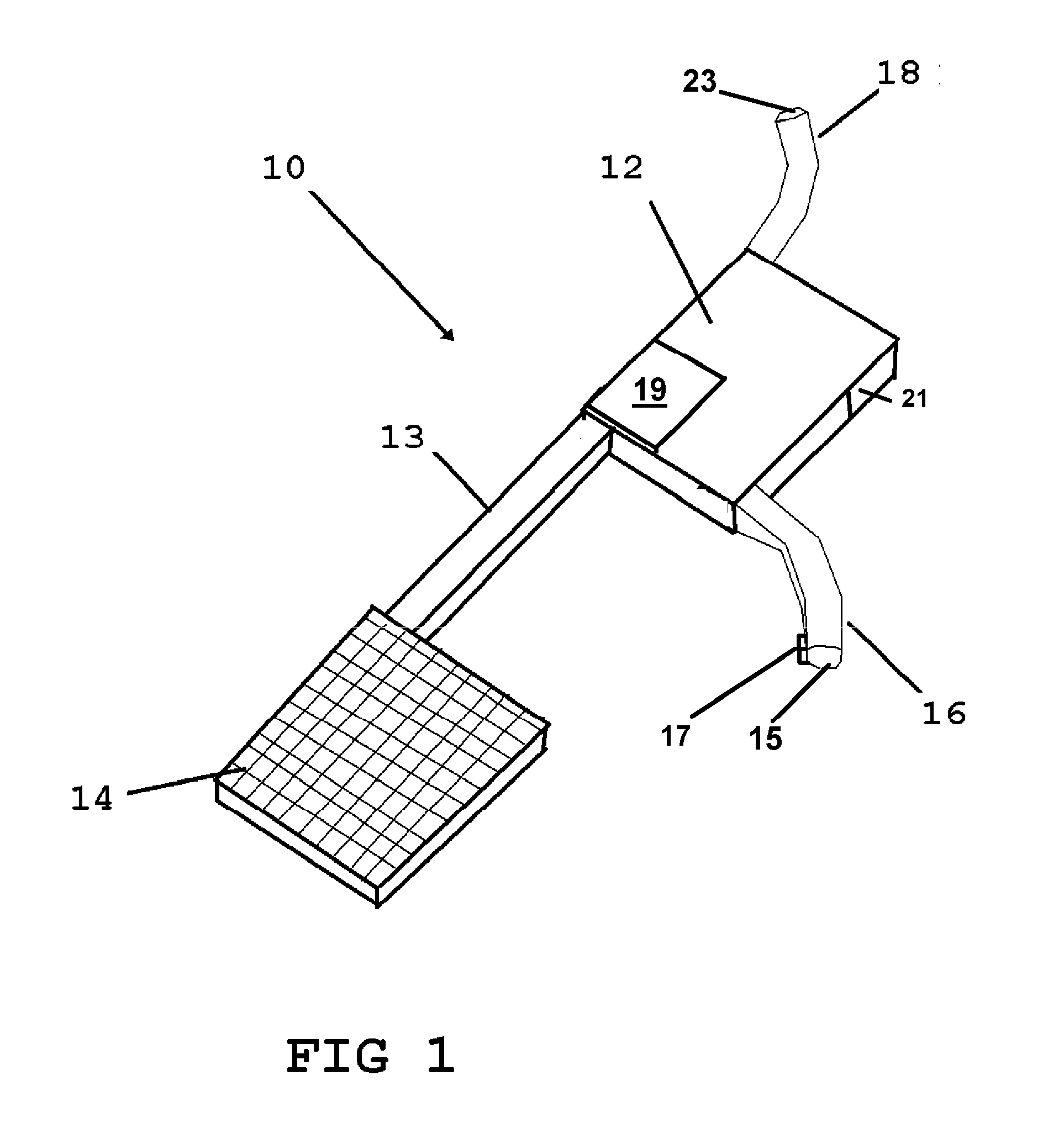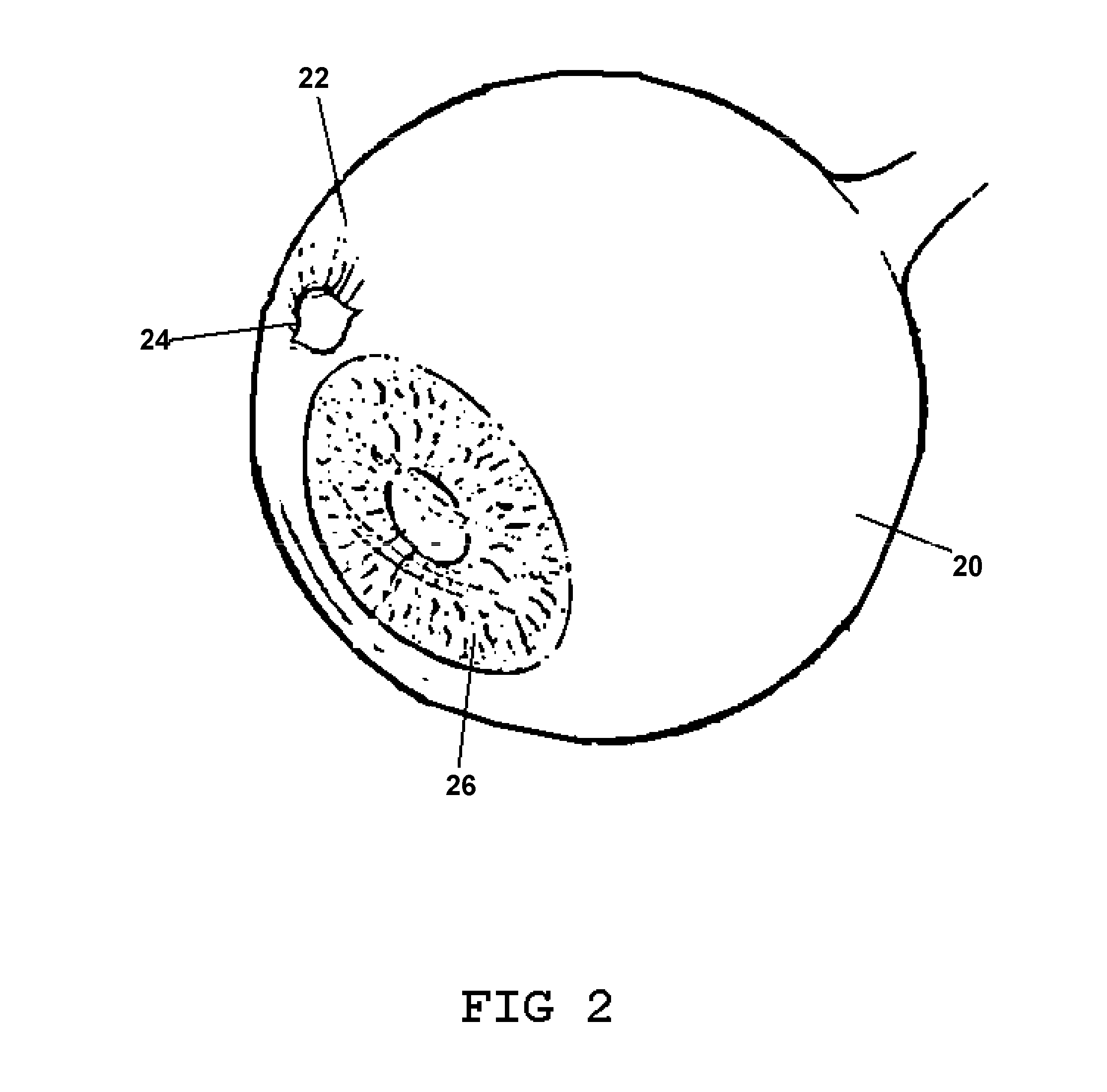Apparatus and method for lowering intraocular pressure in an eye
a technology of intraocular pressure and applicator, which is applied in the field of applicator and corneal implant, can solve the problems of damage to the optic nerve, severe damage to the eye, and loss of sight in humans, and achieve the effect of preventing harmful intraocular pressur
- Summary
- Abstract
- Description
- Claims
- Application Information
AI Technical Summary
Benefits of technology
Problems solved by technology
Method used
Image
Examples
Embodiment Construction
[0032]Now referring to drawings in FIGS. 1-4, wherein similar components are identified by like reference numerals, there is seen in FIG. 1 a preferred embodiment of the device 10. As shown, a nanopump 12 is positioned in an operative mounted position in the eye tissue and in an electrical connection 13 to the photovoltaic cell 14 which is operatively mounted within the clear tissue of the sclera to provide maximum light transmission thereto from outside the eye. The orientation, location, and relative size of the components of the device 10 are not limited to the depictions set forth in the figure but merely give simplified versions of the components for demonstration purposes and should not be considered limited as those skilled in the art will realize that nano-sized pumps and photovoltaic cells are made by many manufacturers all of which are considered within the scope of this intention.
[0033]A fluid intake conduit 16 having an intake aperture 15 on its distal end communicates f...
PUM
 Login to View More
Login to View More Abstract
Description
Claims
Application Information
 Login to View More
Login to View More - R&D
- Intellectual Property
- Life Sciences
- Materials
- Tech Scout
- Unparalleled Data Quality
- Higher Quality Content
- 60% Fewer Hallucinations
Browse by: Latest US Patents, China's latest patents, Technical Efficacy Thesaurus, Application Domain, Technology Topic, Popular Technical Reports.
© 2025 PatSnap. All rights reserved.Legal|Privacy policy|Modern Slavery Act Transparency Statement|Sitemap|About US| Contact US: help@patsnap.com



